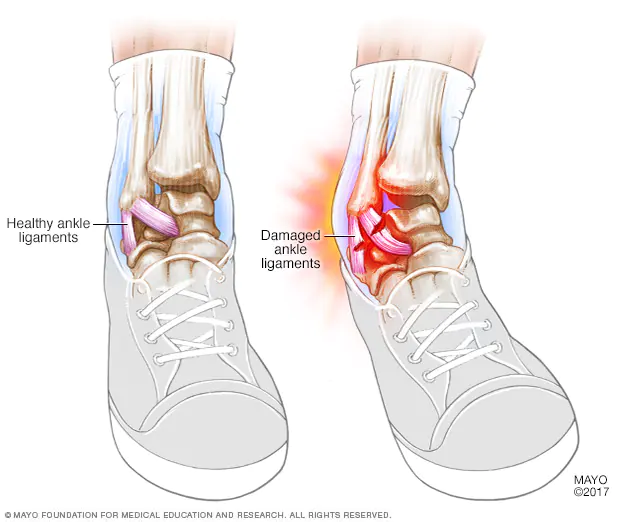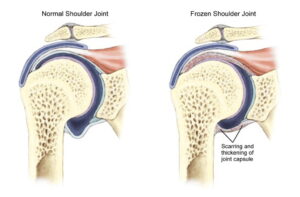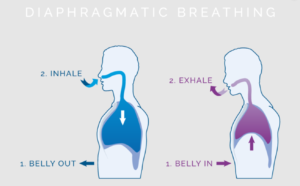Most people have experienced an ankle sprain at least once in their life. Usually, ankle sprains result from sports, changing direction quickly, falling, or slipping on uneven ground or stairs.
There are three main types of ankle sprains: lateral, medial and high.
The most common type is a lateral or inversion ankle sprain where someone rolls the foot inward injuring the ankle muscles, ligaments, tendons and/or bones. Lateral ankle sprains typically injure 3 ligaments that attach the ankle bones together. These ligaments can be stretched with a Grade 1 sprain, partially torn with a Grade 2 sprain or completely torn with a Grade 3 sprain. The bones involved in the sprain are typically the shinbone (tibia), outside leg bone (fibula) and ankle bone (talus). The injured muscles are called the peroneals and are located on the outside of the calf.
A medial or eversion ankle sprain is where you roll the foot outward. It also involves multiple ligaments, muscles and bones in the ankle as well as the muscles supporting the arch of the foot.
A high ankle sprain, also called a syndesmotic injury, is most typical with contact sports injuries and usually involves a collision where the foot is flexed upwards and then twisted or rotated.
Any ankle sprain can be accompanied by bruising, swelling, pain and inability to bear weight that can last from days to months depending on the severity of the injury.
Treatment
Ankle sprains typically do not require imaging unless it is possible a fracture is present. We can make this decision based on specific criteria that involve a patient’s ability to bear weight and the location and intensity of tenderness in the bones around the ankle.
Usually, using a brace or tape, crutches and physical therapy is sufficient to assist in reducing symptoms experienced with ankle sprains.
More recent research supports early mobility, manual therapy and exercise versus the traditional R.I.C.E. method of rest, ice, compression and elevation. Physical therapists use tissue massage to reduce trigger points and joint mobilizations to restore normal mechanics at the ankle. Exercises begin with gentle and tolerable range of motion, then progress to strengthening and balance training. This approach reduces the risk of recurrent injury and provides greater functional outcomes.
Physical therapists can also address any other injuries that result from the ankle sprain. Examples include pain in the knee, hip or back that come from the injury or favoring the ankle. Early intervention is crucial in preventing repeated ankle sprains and dysfunction.
If you have suffered from recurrent ankle sprains or have recently experienced one for the first time, it is important to be evaluated by a Physical Therapist to improve your strength, mobility and balance. Physical Therapy treatment will not only speed up your recovery and your return to activity, but it will decrease your risk for reinjury in the future.







